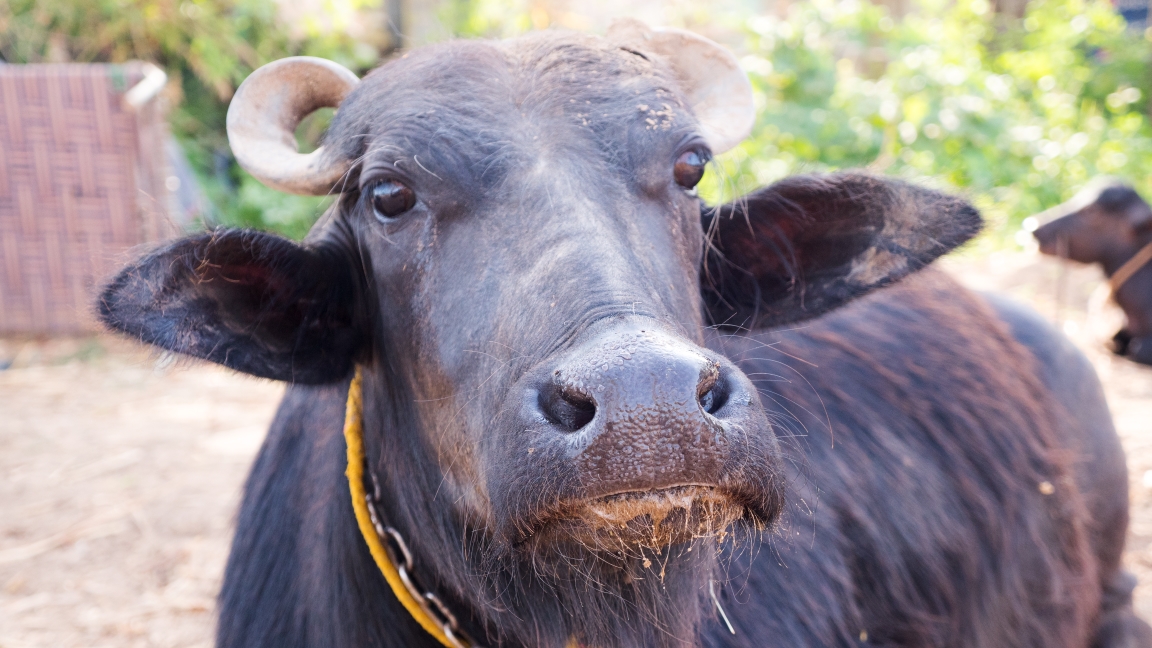RNA-Seq: Exploring Beyond the Commonly Studied Model Organisms
RNA sequencing (RNA-Seq) has revolutionized the study of gene expression and regulation, thus providing deep insights into the inner workings of living organisms. One common method for this technology, total RNA-Seq, profiles both coding and noncoding RNA with the depletion of the overly abundant ribosomal RNA (rRNA). With most existing rRNA depletion methods customized and established for human samples and the commonly studied mouse and rat model systems, the Zymo-Seq RiboFree® Total RNA Library Kit allows researchers to expand their horizons thanks to its novel rRNA depletion technology that is probe-free and species-independent. In this blog, you will find several recently published studies where researchers have leveraged the RiboFree® depletion strategy to explore the transcriptomes of organisms outside the common models.
The Study of the Crimean-Congo Hemorrhagic Fever Virus (CCHFV)

As the scientific community transitions into a post-COVID era, there is an increased focus on epidemiological studies involving potential sources of zoonotic viruses. A recent study conducted by scientists in Uganda shed light on an insufficiently studied yet widespread tickborne pathogen called the Crimean-Congo hemorrhagic fever virus (CCHFV). Amidst their investigation, the researchers employed the Zymo-Seq RiboFree® Total RNA Library Kit to analyze a novel viral strain of the CCHFV.1
CCHFV is transmitted between livestock and humans through infected tick bites, causing severe outbreaks across Africa, Asia, the Middle East, and Eastern Europe.2,3 Despite being the most geographically widespread tick-borne viruses, strains of CCHFV remained poorly studied, especially true for the African strains, with most knowledge derived solely from severe human disease cases.
In this study, researchers took a novel approach by collecting RNA samples directly from the infected African blue ticks, Rhipicephalus (Boophilus) decoloratus. The aim was to expand the understanding of the natural variation of CCHFV strains from tick vectors and animal reservoirs directly. The Zymo-Seq RiboFree® Total RNA Library Kit enabled the authors to successfully generate total RNA libraries from tick RNA for sequencing. From there they were able to characterize the complete coding region of this novel CCHFV strain, contributing to the growing reservoir of data essential for the development of vaccines, diagnostic tools, and control strategies for combating viral infections.1
The Study of the Mustard Hill Coral, Porites astreoides

Coral reefs harbor 25% of the world’s biodiversity and unfortunately face significant challenges due to climate change-induced thermal stress.4, 5 This has led to a decline in global coral populations.5 While some reef species are highly sensitive to these thermal changes, others demonstrate remarkable resilience and even appear to thrive under these normally unfavorable conditions. One such resilient species is the mustard hill coral (Porites astreoides).6
To unravel the mechanisms behind the mustard hill coral’s resilience, researchers from the University of Rhode Island utilized the innovative Zymo-Seq RiboFree® technology to generate an ab initio reference transcriptome of P. astreoides, adding a useful resource for future studies.7
The researchers further leveraged the RNA-Seq data from the RiboFree® libraries to characterize the mapping potential of the draft reference genome they built from DNA sequencing. Remarkably, they achieved alignment rates of around or above 80% for unique sequences. This high alignment rate underscores the suitability of the new reference genome for future transcriptomic studies. As climate change continues to impact global biodiversity, understanding how resilient species like the mustard hill coral cope with these unprecedented challenges offers crucial insights into the future of our ecosystems.
The Study of Oenococcus oeni

Wine production is ironically very far from soothing; in fact, it’s quite a complex process. The quality and stability of the wine is dependent upon bacteria that are utilized for various biochemical reactions. One critical process in winemaking is malolactic fermentation (MLF)8, which plays a vital role in reducing wine acidity and enhancing microbiological stability9, both of which are highly desirable characteristics. Oenococcus oeni, a gram-positive heterofermentative lactic acid bacterium (LAB) species, is commonly used for controlled MLF in wine production due to its acid tolerance of high ethanol levels.10 However, its sensitivity to sulfur dioxide (SO2), an antiseptic compound commonly used in winemaking9, remains poorly understood.
To shed light on the transcriptional response of O. oeni during MLF under the stress of SO2 exposure, researchers from Australia conducted a comprehensive investigation.11 They utilized the Zymo-Seq RiboFree® Total RNA Library Kit to prepare total RNA-Seq libraries from O. oeni under various experimental conditions. Through sequencing and differential gene expression analysis, they unveiled key transcriptional changes induced by SO2 exposure, highlighting its potential as a target for the development of SO2-tolerant strains. These advancements are pivotal in enhancing wine production and expanding the knowledge within the winemaking community.
Conclusion
The significance of an RNA-Seq kit that is compatible across all species cannot be overstated. With the Zymo-Seq RiboFree® Total RNA Library Kit, scientists worldwide now have a powerful tool at their disposal to delve into the transcriptomics of less commonly studied organisms. As exemplified by the peer-reviewed research presented above, the possibilities for remarkable and unprecedented discoveries are unlimited. From unraveling the secrets of resilient coral species to untangling the intricate responses of bacteria in wine production, the Zymo-Seq RiboFree® Total RNA Library Kit has served as a key that opens the door to a wealth of knowledge and innovation.
References
- Wampande, E. M.; Waiswa, P.; Allen, D. J.; Hewson, R.; Frost, S. D. W.; Stubbs, S. C. B. Phylogenetic Characterization of Crimean-Congo Hemorrhagic Fever Virus Detected in African Blue Ticks Feeding on Cattle in a Ugandan Abattoir. Microorganisms 2021, 9 (2). DOI: 10.3390/microorganisms9020438.
- Bente, D. A.; Forrester, N. L.; Watts, D. M.; McAuley, A. J.; Whitehouse, C. A.; Bray, M. Crimean-Congo hemorrhagic fever: history, epidemiology, pathogenesis, clinical syndrome and genetic diversity. Antiviral Res 2013, 100 (1), 159-189. DOI: 10.1016/j.antiviral.2013.07.006.
- Hoogstraal, H. The epidemiology of tick-borne Crimean-Congo hemorrhagic fever in Asia, Europe, and Africa. J Med Ento mol 1979, 15 (4), 307-417. DOI: 10.1093/jmedent/15.4.307.
- Hughes, T. P.; Kerry, J. T.; Connolly, S. R.; Álvarez-Romero, J. G.; Eakin, C. M.; Heron, S. F.; Gonzalez, M. A.; Moneghetti, J. Emergent properties in the responses of tropical corals to recurrent climate extremes. Curr Biol 2021, 31 (23), 5393-5399. e5393. DOI: 10.1016/j.cub.2021.10.046.
- Hughes, T. P.; Anderson, K. D.; Connolly, S. R.; Heron, S. F.; Kerry, J. T.; Lough, J. M.; Baird, A. H.; Baum, J. K.; Berumen, M. L.; Bridge, T. C.; et al. Spatial and temporal patterns of mass bleaching of corals in the Anthropocene. Science 2018, 359 (6371), 80-83. DOI: 10.1126/science.aan8048.
- Loya, Y.; Sakai, K.; Yamazato, K.; Nakano, Y.; Sambali, H.; van Woesik, R. Coral bleaching: the winners and the losers. Ecology Letters 2001, 4 (2), 122-131.
- Wong, K. H.; Putnam, H. M. The genome of the mustard hill coral, Porites astreoides. GigaByte 2022, 2022, gigabyte65. DOI: 10.46471/gigabyte.65
- Ribereau-Gayon, P.; Dubourdieu, D.; Doneche, B.; Lonvaud, A. Handbook of Enology: The Microbiology of Wine and Vinifi cations; 2006.
- Lonvaud-Funel, A. Lactic acid bacteria in the quality improvement and depreciation of wine. Antonie Van Leeuwenhoek 1999, 76 (1-4), 317-331.
- Henick-Kling, T. Malolactic Fermentation. In Wine Microbiology and Biotechnology, Fleet, G. H. Ed.; 1993; pp 289-326.
- Onetto, C. A.; Costello, P. J.; Kolouchova, R.; Jordans, C.; McCarthy, J.; Schmidt, S. A. Analysis of Transcriptomic Response to SO2 by Oenococcus oeni Growing in Continuous Culture. Microbiol Spectr 2021, 9 (2), e0115421. DOI: 10.1128/ Spectrum.01154-21.


